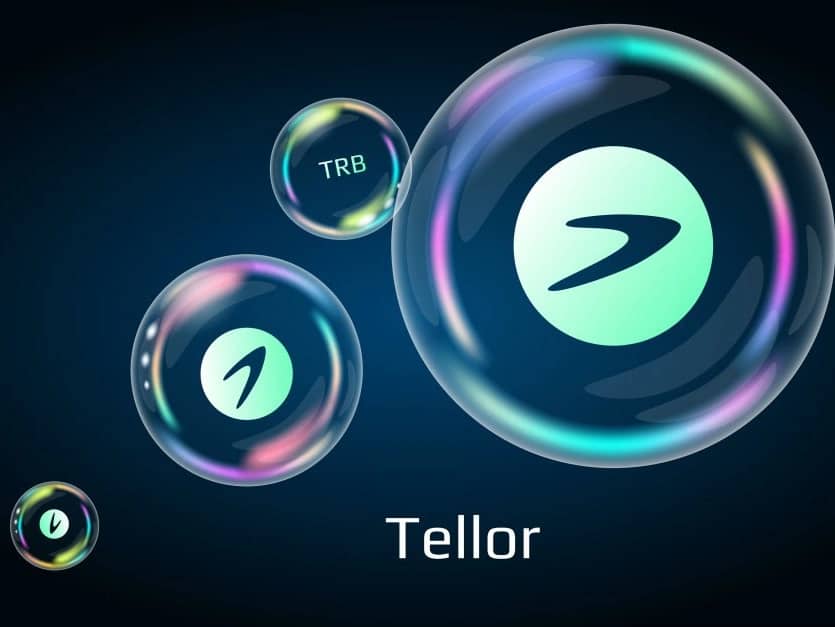Subscribe to wiki
Share wiki
Bookmark
Tellor
The Agent Tokenization Platform (ATP):Build autonomous agents with the Agent Development Kit (ADK)
Tellor
Tellor is a decentralized oracle built on the Ethereum network. The Tellor Oracle network is powered by the TRB token. Tellor provides a solution that enables the simple implementation of data into smart contracts, using a hybrid of both the proof-of-work and the proof-of-stake systems called staked proof of work.
In September 2020, Tellor v2 went live on the mainnet. In October, the team removed the admin key thus destroying the last centralized mechanism in Tellor's protocol.
In November 2020, the Tellor team deployed an optimistic oracle on Matic Network called Tellor Too.
Background
Tellor is a decentralized oracle that brings off-chain data onto the Ethereum blockchain. Using the PoW system, tokens are mined using every successful Tellor data point. The company, from there, takes a 10% share.

The idea of developing Tellor came about when the company's founders, Brenda Loya, Nicholas Fett, and Michael Zemrose, felt that there was a need for a decentralized oracle for their previous startup, Daxia. With Daxia, they relied on a centralized oracle, which did not suit their ambitions of creating a fully decentralized protocol. After discovering that there was no existing decentralized oracle, the team set out to create the first on the platform. Discussing the firm's beliefs and vision in an article, they stated:
We don’t want to be part of the crypto ecosystem that we loathe. We wouldn’t buy or use a centralized product for Tellor. Whether it’s a majority team owned token or small whitelists controlled by an owner for eternity.
Tech
Tellor uses a Staked Proof of Work protocol which is a hybrid of PoW and PoS systems. In order for one to begin mining on Tellor, miners are required to stake 1000 of the firm's native coin, TRB. This was imposed as an effort to bar malicious activity from other miners, who could potentially feed 'bad data points.'
Tellor's Ethereum-based token never had its own Initial Coin Offering (ICO). Instead of an ICO, the company chose to distribute 10% of miner rewards towards the founders' treasury. Discussing this decision, they explained,
A dev-share allows us to get the necessary financing we need to create a sustained and secure oracle network, but only if we really deliver a cutting-edge product that’s needed. If we don’t, then the token value will plummet and there won’t be any interest in Tellor, be it miners or actual projects using the oracle.
Tellor follows a Constant Issuance method for its token distribution. This means that the firm mints a fixed amount on each block and the overall token supply grows (at a fixed rate) annually, inevitably creating 'a gradually decreasing money supply growth rate.'
Tokenomics
Tellor Tributes (TRB) are the native token of the Tellor. They are used to incentivize miners to provide data through base rewards and tips via user requests. They are used for governing valid data through disputes, and for system upgrades proposed and voted on by token holders. TRB is created through a proof-of-work (PoW) mining process, where miners compete to provide accurate data to the oracle and are rewarded with TRB for their contributions. Tellor miners are additionally required to stake 1000 TRB to mine the network.
Tellor had no initial coin offering, there was no pre-mine, and all tokens are created by miners actively participating in the network. There is no fixed supply of TRB, with the total supply increasing as a function of the base reward paid to miners for successful queries.
In September 2020, Tellor v2 launched adding token fee burning to the Tellor protocol.
Tellor v2
In September 2020, Tellor v2 went live on mainnet. Here is the list of improvements that were applied to Tellor's original version.
Scalability
- Increase the number of data points added per block: Tellor's previous system allowed for the request with the highest payout to be mined every 10 minutes. In the V2 version of Tellor, instead of only the value with the highest payout being reported, it is an array of the top 5 requests by order of payout amount. From accepting a request ID and its value it would accept two arrays, one with the top 5 request ID’s and another with the corresponding prices to these.
- Increase speed (reduce the 10 min difficulty target): in Tellor’s V2, the team increased the speed at which values are added to the blockchain. This speed is controlled by setting the target mining difficulty, which was shifted from 10 to 5 minutes.
Security
- Limiting rewards per miner: to increase security the team incentivizes decentralization by limiting the number of times an address can win awards per day. They reduced each staked miners allotment to once every 15 minutes. So if a miner wants to win each 5-minute block, he would be required to stake the 1000 tokens 3 times.
- No time limit on disputes: the purpose of this change is to expand the period in which bad data can be removed from the chain as well as remove any assumptions of finality or time to validity on the Tellor values.
- Multiple round disputes: disputes will now cost the amount of around 15 TRB (or more depending on the number of validators in the system) with the voting lasting only two days. After the two day voting period, there is a one day time period in which the results of the vote can be disputed. This subsequent round will be double in terms of price TRB to initiate and last twice as long. After that voting period, there will be another one day lock for disputes of the result and the process can carry on indefinitely.
Token Fee Burning
One of the missing pieces in both the Tellor monetary policy and the Ethereum monetary policy is the commoditization of the underlying asset. TRB should have a method for self-creating scarcity as usage goes up. In v2, half of the tipped TRB is removed from circulation (the other half going to the miner).
In October 2020, the founding team of Tellor announced they sent the admin key to the “0 Address” and thus destroyed the last centralized mechanism in Tellor’s protocol. All future changes and upgrades to the Tellor protocol can only be handled by the community governance of the token holders. Moving forward all upgrades to the system will be proposed by any individual via a Tellor Improvement Proposal on Tellor's GitHub. Discussions will follow and the process will eventually move to a vote by the community.
Tellor Too
Tellor Too, or Tellor Optimistic Oracle, is an oracle implementation built over on Matic Network. An optimistic oracle is a data feed that uses a centralized source but has the option to fallback to a decentralized option (Tellor) if there is a dispute or conflict in regards to the data’s accuracy.
Dapps built on Matic, will be able to pull prices from Tellor Too’s oracle price feed without having to incentivize a network of miners to compete at proof-of-work and submit data. This price feed will be simple, centralized, and maintained by the Tellor team for the time being. In the case a user of this oracle does not agree with the price data, it can be challenged which will force the contract to read from Mainnet Ethereum’s Tellor. Any party can call a function on Ethereum that grabs prices from Tellor and pushes them to Matic Validators who bridge the two systems and store it on Matic to be used by Tellor Too.
Investors
Tellor has raised over $400,000. Its investors include MakerDAO, Binance Labs, and ConsenSys.
See something wrong?
The Agent Tokenization Platform (ATP):Build autonomous agents with the Agent Development Kit (ADK)
